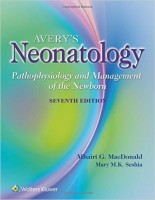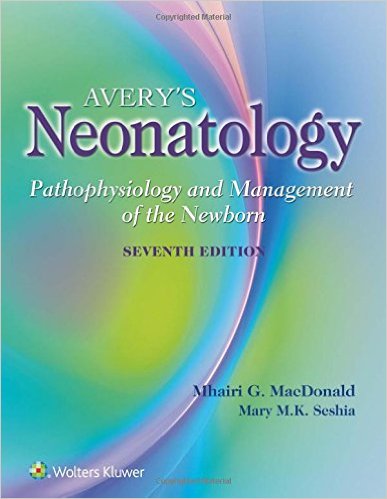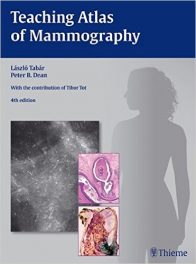 Editors: Mhairy G. MacDonald, MD; and Mary M.K. Seshia, MD
Editors: Mhairy G. MacDonald, MD; and Mary M.K. Seshia, MD
Publisher: Wolters Kluwer | Lippincott, Williams & Wilkins – 1199 pages
Book Review by: Nano Khilnani
This book was first written about 40 years ago by Dr. Gordon B. Avery. In his Foreword to this, the 7th edition of the book he created, he points out that in January 1975, neonatology was not even formally recognized as a medical specialty; and that “the first Sub-Board Examinations in Neonatal-Perinatal Medicine were given later that year.”
He relates to us that the situation for doctors and nurses caring for ‘distressed fetuses, babies in the birth transition, and sick and distressed newborn infants’ was very difficult. He writes that nurseries had enormously varied layouts and equipment, and that ‘digging information from basic science journals’ about ‘these little beings’ with ‘life-threatening problems’ was ‘tedious’ in a ‘period of rapid change.’
That challenging situation impelled Dr. Avery to put together available information and create Neonatology (as this book was first called) in 1975. Since that time, the following important developments led to six more editions:
- Genetics and biochemistry have blossomed
- Surgical interventions have become almost routine
- Instrumentation to support respiration, and even extra-corporeal heart-lung machines, have proved effective and lifesaving
- Microchemistry has allowed the monitoring of blood using just tiny quantities
- Indwelling catheters have served for both monitoring and intravenous alimentation
- An explosion of knowledge since then, with more than half the papers presented at pediatric meetings being about the fetus and the newborn
- The practice of neonatology has changed and become more complicated and expensive
All of the above events and more, have helped create this current – seventh – edition into a very substantial, valuable resource, not only in print form, but also online (see access details below). The current amount of information in neonatology is vast, and I am sure it was no easy task for the editors – Dr. MacDonald and Seshia – to compile, organize and present it in this book.
One hundred and thirty-five doctors and specialists in fields related to the care of the unborn and newborn, contributed to the contents of this volume writing its 56 chapters. They are from all over the United States and six other countries: Canada, Israel, Philippines, Saudi Arabia, Slovenia, and the United Kingdom.
Below is an overview of what you will find in the nearly 1200 pages of this large book. The overview we provide you below consists only of the six Parts of this book
- General Considerations
- The Fetal Patient
- Transition and Stabilization
- The Newborn Infant
- Pharmacology
- Beyond the Nursery
The entire contents of the print edition are available for download as an eBook. Follow these simple steps:
- Go to http://solution.lww.com/access
- Enter the Access Code found on the inside front cover of this book
- Enter your information, click Submit, and follow the on-screen instructions to start reading your eBook
Your book purchase includes not only a complimentary download of the enhanced eBook for iOS, Android, PC and Mac, but also these features:
- Complete content with enhanced navigation
- Powerful search tools and smart navigation cross-links that pull results from content in the book, your notes, and even the web
- Cross-linked pages, references, and more for easy navigation
- Highlighting tool for easier reference of key content throughout the text
- Ability to take and share notes with friends and colleagues
- Quick reference tabbing to save your favorite content for future use
Better, more informed practices in neonatology result in improved care of unborn children which in turn results in fewer deaths. Are you surprised that the United States, with one of the world’s highest costs of health care, had the highest infant mortality rate in 2010 among developed countries – 6.10 deaths per 1,000 live births? This was revealed in a study entitled International Comparisons of Infant Mortality Factors: United States and Europe 2010, by the Organization of Economic Development.
This 6.10 figure had improved a bit from the 2009 overall rate of 6.39. In a 2009 study by the U.S. Department of Health and Human Services, non-Hispanic Blacks had the worst number, with an infant mortality rate of 12.4 per 1,000 live births, while the non-Hispanic Whites’ rate was less than half that, at 5.33. The ethnic population that had the lowest infant mortality rate was Asians and Pacific Islanders, with only 4.4 infant deaths per 1,000 live births.
Globally, the average infant mortality rate (IMR) declined substantially from 152 deaths per thousand live births in 1950 to just 43 in 2010. Africa had the highest IMR of 180 in 1950 which declined to 60, just a third of that in 2010.
Chapter organization in this book is superb, with well-defined topics, detailed discussions of ailments, diseases, and disorders, and lots of supporting data in numerous tables. Let’s take a look at chapter 13, The Impact of Maternal Illness on the Neonate. It begins with a short Introduction, followed by discussions in these heads and subheads:
- Preterm Delivery
- Screening
- Interventions
- Modifiable Risk Factors
- Obesity and Effect of Bariatric Surgery
- Hypertensive Disorders and Pre-Eclampsia
- Diabetes Mellitus
- Pregestational DM
- Gestational DM
- Thyroid Disease
- Autoimmune Disorders
- Seizure Disorders
- Perinatal Infections
- Influenza
- Cytomegalovirus
- Toxoplasmosis
- Human Immunodeficiency Virus
- Liver Disease
- Hepatitis
- Intrahepatic Cholestasis of Pregnancy
- Acute Fatty Liver of Pregnancy
- Gallbladder Disease and Cholecystitis
- Cancer
- Pregnancy After Transplantation
These are followed by a Summary and a long list of References for further study and exploration.
What are some of the important tasks that the seventh edition of Avery’s Neonatology will enable you to do? Among them, they are:
- Make the most informed, appropriate clinical decisions
- Access the latest advances
- View images of newborns including hemodynamics, inflammations, and infections
- Apply evidence-based practices
- See more than 300 full-color photographs that will boost your learning process
This is a fairly comprehensive work on the growing and evolving field of neonatology. Nothing can say it better that this is an outstanding and highly valuable book, well-received and used by practitioners and students, than the fact that it has been around for about 40 years and that this is its seventh edition.
Editors:
Mhairy G. MacDonald, MBChB, DCH, FRCP (E), FAAP, FRCPCH is Professor of Pediatrics at George Washington University School of Medicine and Health Sciences in Washington, DC.
Mary M.K. Seshia, MBChB, DCH, FRCP (E), FRCPCH is Professor of Pediatrics, Obstetrics, Gynecology & Reproductive Sciences at the University of Manitoba; and Neonatologist in the Division of Neonatal-Perinatal Medicine at the Health Sciences Centre, Department of Pediatrics and Child Health in Winnipeg, Manitoba, Canada.







